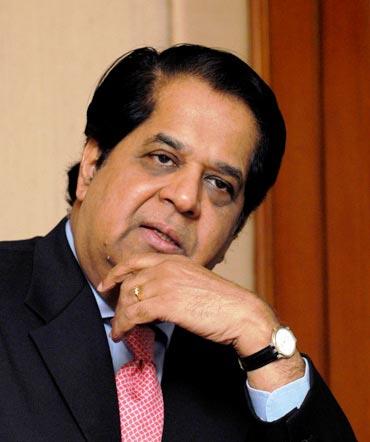
Things have changed dramatically for India Inc post liberalisation in 1991. Business Standard catches up with three industry veterans on what reforms meant in the early days and what lies ahead . . .
K V Kamath, Chairman, ICICI Bank
'Reforms are required in terms of clarity.'
How did liberalisation and reforms in 1991 help India Inc?
Two important changes happened with liberalisation: Abolition of licence raj and opening up to global competition.
The fear that global competition will wipe out Indian industry did not bear out because of a few things that had happened.
One, I think, the lead time for foreign manufacturing entities to decide and come in took longer than what it should have been. And in the meantime Indian industry scaled up and started becoming efficient.
. . .
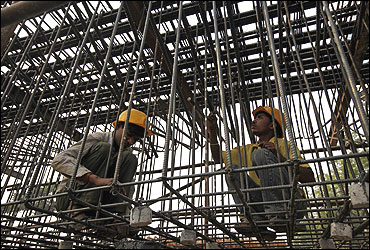
So, that's saved the day for them. And that has continued for the next 10 years.
Indian industry has continued to become stronger, continued to scale up and become quality- and cost-competitive in the global context.
If I were to summarise, what liberalisation did was help create an Indian industry that was globally competitive both in terms of economic scale, in terms of cost and in terms of quality.
Did the first generation reforms err or fall short in any way?
I think where we fell short even at that period of time was that the pace at which infrastructure grew to support Indian industry.
. . .

And that has been a recurring problem, because that problem endures even now. To some extent we are falling short of the support that is required through infrastructure.
The reform process there has lagged.
What new reforms are needed to build on the reforms of the past 20 years?
There is need now to re-look at what all was done and see whether course correction is required. Where reforms are required is very clear.
Reform is required in terms of clarity, regarding issues of land, environment, regarding issues of forest and the rights of people living in the forests or traditionally living in areas which industry wants, and in mining.
. . .

What needs to be done now is articulation of policy and clarity on how to proceed, so that projects do not get stuck and lenders do not shy away from the projects due to uncertainty.
That has to be now addressed through reforms, or articulation of clear policies in these areas.
Do you see green activism as a stumbling block?
I don't see anything as a stumbling block. I see that clarity is needed on the policy front in these areas, so that businesses can take an appropriate view and proceed within the policy guidelines.
I emphasise that clarity should be there. If there is no clarity, then investors will hesitate to invest and lenders will hesitate to lend.
. . .

What reforms are needed to give the manufacturing sector a boost?
The manufacturing sector has gone beyond that stage now. The sector has come of age and is now globalising very rapidly. So, what is needed is to see whether there is any constraint for these companies to go global, and try to make sure that the integration of Indian business with global business is seamless.
That is critical from our own competitiveness point of view. It is critical from the point of view of getting access to technology and making our mark in a global context.
Companies are doing it on their own, but one can take stock if anything needs to be done.
. . .

N R Narayana Murthy, Co-founder & Chairman Emeritus of Infosys
'IT services have potential to become a $300-billion industry by 2020.'
What was it like to do business before 1991?
Those were difficult days. To give you some examples, it actually took us about 50 visits to Delhi over a period of three years to get a licence to import a computer for $300,000.
It would take approximately 15 days for the Reserve Bank of India to release foreign exchange for us to travel abroad for a few days.
There was an officer called Controller of Capital Issues. He was sitting in Delhi and he had absolutely no idea what this capital market was.
And he was supposed to decide what price we should have for our IPO. He rarely gave any premium over the card value when we wanted to have the IPO.
. . .

Besides, it took us two years to get a telephone connection in Bengaluru. RBI had a very funny rule those days. They would say, "First you go and earn foreign exchange and then we will give you only 50 per cent of that for the maintenance allowance of your staff."
This was for the same people who were actually earning that foreign exchange. So, it was the most repressive regime in terms of business friendliness.
It was the most business-unfriendly regime one could imagine in the world.
Did it make a difference immediately after the reforms were introduced?
The reform did the following things: It abolished licensing for us, which meant that we could import any technology we wanted.
. . .

It brought down the customs duties from something like 125 per cent or so to about 25 per cent. RBI introduced current account convertibility. We did not need any permission from RBI for our travel abroad, for opening offices abroad or for hiring consultants in sales, marketing, quality and branding.
They abolished the office of the Controller of Capital Issues. They said the company and the investment banker could decide on the pricing of the IPO.
They allowed 100 per cent equity for foreign companies in high technology.
Do you think the financial reforms started at a time when the industry needed them?
Very much so, because, in 1990 we had an offer to sell out for $1 million. The company was already running for nine years, but our growth was very slow.
. . .
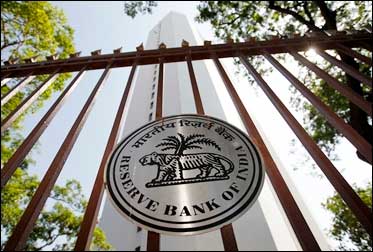
Therefore, my colleagues were quite excited about selling the company. Therefore, I could say that the reforms came at the most opportune time for Infosys.
Do you think the reforms helped certain sectors more and IT was among those?
Very much so. I think the reforms helped the IT sector quite a lot, because we were export- oriented.
The fact that they allowed 100 per cent equity for multinationals in our business made it clear that there was going to be a lot of competition for the employees and talent.
In my opinion, we got political freedom in 1947, but the economic reforms of 1991 brought economic freedom to India.
. . .

Did the industry fully understand the potential of the reforms at that time?
At least, Infosys did, because they (the reforms) addressed some of the major bottlenecks to growth.
First of all, we did not require licences any more. That means, we could take decisions within the board room rather than waiting in the corridor of North Block.
Secondly, current account convertibility made it easier to open offices abroad, get consultants in quality, branding etc and to send our employees abroad for projects.
Thirdly, it also made IPOs attractive, because the investment banker and Infosys could decide on the IPO pricing, and, therefore, we could have a high premium.
And, finally, because multinationals like IBM and other companies came to India, we knew that there was going to be tremendous completion for talent.
. . .

We had to wake up and devise innovative ways to attract and retain employees. That's how we thought of employees' stock option plans and built our own campus, which was India's first software campus.
Was there any communication between you and the government on your problem?
We used to communicate from time to time about our problems. But we had very little hope, because, for the previous 10 years not much had changed.
Therefore, we thought the government would not care. The economic reforms started by Narasimha Rao and the then finance minister, Manmohan Singh, were a big surprise for us.
. . .

The global economy is in bad shape... Do we need another bold set of reforms?
Yes. I think my own industry has the potential to become a $300-billion industry by 2020.
For this, we require huge reforms in the education sector, and in terms of physical infrastructure -- roads, schools, airports, etc.
I do believe that time has come for a second set of reforms. So, there is a lot of room for us to improve and become more efficient.
. . .
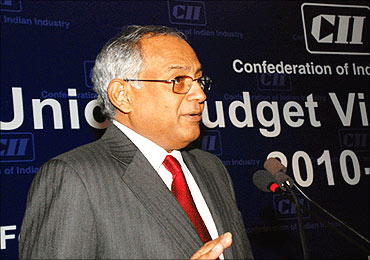
Venu Srinivasan, Chairman & MD, TVS Motors Ltd
'Meet the target of creating 75 mn jobs over the next 5 years.'
What does liberalisation mean for India Inc?
Pre-1991 we were tightly regulated for setting up a plant, increasing capacity, raising money. It was a very tight licence regime.
India was a very high-cost manufacturing country. Post-1991, companies were able to raise money and manufacturers became more competitive. India also became an attractive destination for MNCs.
From services to products, we saw a huge surge in investments in India.
India not only became attractive for investment and creating jobs overseas, but also for domestic companies, and our exports have started growing.
. . .
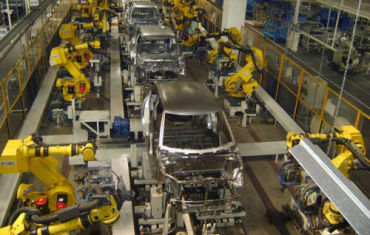
Banking was opened up, insurance opened up in a limited way, so many things happened, which created a new India. Result: In the last 20 years per capita income has grown rapidly, that too in dollars.
How did liberalisation help capital flows?
Not just inflows; outflow has increased too. Capital convertibility was practically brought in. Indian companies started acquiring companies overseas.
Today the Tatas are the largest employers in the United Kingdom. While domestically, we attracted capital and lots of capacity were created. Equally India Inc also was able to grow overseas.
. . .
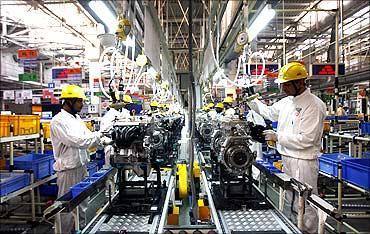
Are you happy with the current state of reforms or is it time for new reforms?
The first 10 years yielded very good results. People developed the confidence that India was a very good environment to operate in.
But now manufacturing reform needs to go to the next stage and it has not happened so far. For the services sector, more financial sector freedom is very very important.
What reforms are needed in the manufacturing sector?
Factory rules need to be changed. There are multiple inspections and licences required -- from pollution control boards to the Factory Act, gratuity, provident fund and others.
Each one has a regulator and an inspector, and unlike China, there is no single window. This is why the sector is not going forward to the next level in India, which can be a place to invest for export.
. . .

If my accounts can be audited by a CA, why can't factory inspections be given to professional bodies? Like company secretaries, who are CAs or management accountants, we can have certification done by chartered engineers.
Typically, we have five inspections per month as compared to a factory in Thailand.
Other examples are employees insurance. ESI should be corporatised and should be thrown open to competition.
Factory reforms must take place to meet the target of creating 75 million jobs over the next five years.
. . .

How about labour issues? This has been a major challenge for auto companies...
Multiplicity of unions and recognition of unions are two major issues.
Wherever the Union government is involved largely, other than ESI, liberalisation has taken place, but wherever the state governments are involved, nothing has happened.
Which are the other sectors where reforms are needed?
Power, mining and Goods and Services Tax.